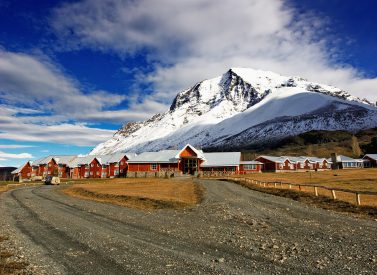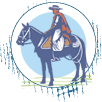
Road trip, Ruta 40, Argentina Patagonia.
Road trip, Ruta 40, Argentina Patagonia.
Road trip from Bariloche to El Chaltén along the marvelous Ruta 40 (Route 40).
This is an iconic road trip.
The trip starts in the chocolate box town of Bariloche. Bariloche is set in a scenically beautiful spot on Lake Nahuel Huapi. The small town is surrounded by Andean peaks cloaked on their lower slopes by Patagonian forests.
We travel through some of Argentine Patagonia’s well well known highlights as we travel southwards to end in El Calafate.
More on Route 40 Road Trip
We visit Los Alerces National Park, home of the endangered alerce (Fitzroya cupressoides), 2nd longest living tree species. Here dense temperate forests give way to alpine meadows and high Andean peaks.
We drive across the immense Patagonian steppe to visit the Sarmiento Petrified Forest and the Cave of Hands, cave paintings on the Pinturas River Canyon, declared World Heritage by UNESCO in 2017.
From there we will go west to Los Antiguos, by the huge Buenos Aires lake, the second-largest lake in South America. From Los Antiguos we cross to Chile for a day tour to the Marble Caves, in General Carrera Lake.
Next on our journey we go to Lago Posadas on Route 41, the scenic Mount Zeballos Road, through lunar type landscapes. We resume driving the Route 40, staying one night at Estancia La Angostura, a typical Patagonian ranch.
We then drive on to El Chaltén, the Argentinian capital of trekking. Say goodbye to your driver here.
You spend a couple of nights here, giving you time to trek to the granite spires of Fitzroy and Cerro Torre.
The journey continues by minibus to El Calafate for two nights and a chance to set eyes on the vast sparkling glacier of Perito Moreno.
Trip Highlights
Print Share Download as PDF-
Cueva de las Manos
-
Petrified Forest
-
Argentinean ranch
-
Wildlife - rhea, fox, Andean condor, guanaco
-
General Carrera lake
-
Marble caves
An amazing road trip, the best guide too.
L. Chapman 2020
Full Itinerary
Day 1: Bariloche - Los Alerces
0900 pick up. From Bariloche we take Route 40 direction south, passing by lakes Gutierrez and Mascardi to reach El Bolsón, a small and relaxed town at the foot of Piltriquitron Peak. If it is open we will walk by its colorful handicrafts market, the best in Patagonia.
After El Bolsón we will take the detour to Cholila, a rural village in a beautiful green valley to get to the north gate of Los Alerces National Park. We will do several stops as we cross the park north to south by Rivadavia, Menendez and Futalaufquen lakes. By lakes Menéndez and Verde we can do a 2-hour hike to admire the magnificent flora and the amazing blue and green colors of the lakes and rivers.
Overnight at Hosteria Quime Quipan or similar.
Distance: 315 km, paved and gravel road.
Day 2: Los Alerces - Sarmiento
We leave the national park and drive down to Esquel by the beautiful Percey River valley to take Route 40 again towards the huge empty spaces of the Patagonian Steppe. As Route 40 moves south it also turns to the centre of the Chubut province, and after passing by the town of Tecka and Gobernador Costa the steppe landscape of needle grasses turn into a desert-like terrain, with only a few hard and flat bushes. In the afternoon we will arrive to Sarmiento, a small town in the middle of the steppe and between Lakes Musters and Colhué Huapí.
Overnight at Cabañas Años Verdes.
Distance: 475 km, paved.
Day 3: Sarmiento - Perito Moreno
In the morning we will visit Sarmiento Petrified Forest, located 30 km away from the town. It is a palaentology site where there are fossilized trees from past geological eras. Patagonia is one of the richest areas in the world on this kind of sites, with the Sarmiento forest being one of its main exponents. In the afternoon we will continue driving south and reach the town of Río Mayo, located on the Senger River department. This area in famous for its sheep breeding estancias, that produce top-quality wools. From Río Mayo we will continue to the town of Perito Moreno, where we will spend the night.
Overnight at Hotel Kelman.
Distance: 340 km, paved and gravel road.
Day 4: Perito Moreno – Cueva de Las Manos
From Perito Moreno we will continue by Route 40 and then take a detour to the formidable Pinturas River Canyon to visit Cueva de las Manos (“Cave of the Hands”). The canyon walls feature paintings of four different periods from 9,300 to 1,300 years ago, being one of the most ancient artistic expressions of the South American natives. It was declared World Heritage Site by UNESCO in 1999.
After visiting the paintings we will go back to Perito Moreno and after a quick stop we will detour to the west, covering 65 Km to Los Antiguos, by the immense Buenos Aires Lake.
Overnight at Hosteria Antigua Patagonia.
Distance: 180 km, paved and dirt road.
Day 5: Los Antiguos - Marble caves
With a tour company based in Los Antiguos you cross to Chile in a minivan and drive all the way by Lake General Carrera to Puerto Tranquilo, with amazing views over the lake and the mountains around the Northern Patagonia Ice Field.
Chelenko Lake, shared by Argentina and Chile, is the second largest in South America. Is located at the foot of some of the highest peaks in Patagonia and the Northern Ice Field, displaying some of the best sceneries in Patagonia.
In Puerto Tranquilo we will take a boat excursion to the stunning “Marble Chapels”, rocky formations of amazing shapes resulting from the wind and water erosion. After that we have a picnic by the lake and make our way back to Los Antiguos.
Overnight at Hosteria Antigua Patagonia.
Distance: 360 km, paved and dirt road.
Day 6: Los Antiguos - Lago Posadas
From Los Antiguos we will take the Mount Zeballos Road*, a scenic route of 160 km of dirt road covering 4 different environments: steppe, Andean forest, altitude grassland and high mountain.
We will go up from 200 to 1.500 m. to reach a viewpoint with great sights of Mount Zeballos. Going down we will pass several estancias before reaching the small village of Lago Posadas.
In the afternoon we will explore the spectacular Posadas and Pueyrredón Lakes.
Overnight at La Posada del Posadas.
Distance: 240 km, dirt road.
* This road is subject to authorization due to climatic conditions. If the road is not open we will go to Lago Posadas by Routes 40 and 39 instead.
Day 7: Lago Posadas – Estancia La AngosturaURA
From Lago Posadas we will cover 75 km of dirt road to take Route 40 again at Bajo Caracoles. Then we will continue south to Estancia La Angostura, and authentic Patagonia Ranch owned by the Kusanovic family, pioneers in the area since 1878. In the estancia we can do horse riding, go birdwatching and enjoy some superb Patagonian food.
Overnight at Estancia La Angostura.
Distance: 350 km, dirt road and paved.
Day 8: Estancia La Angostura - El Chalten
Back again on Route 40 we will drive to Cardiel Lake, where we can see big herds of guanacos, the Patagonian camelid. Back on the paved road again we will reach Tres Lagos and head to El Chaltén.
This is the Argentinean capital of trekking, with innumerable attractions for hikers and mountain climbers.
The most iconic peaks are Mount Fitz Roy (3,405 m) and Cerro Torre (3,102) which attract climbers from all over the world due to their extreme technical difficulty. If the weather conditions are good this part of the route offers majestic landscapes, with great views of the impressive Fitz Roy massif and the Viedma Glacier, both within the Los Glaciares National Park.
Overnight El Chalten at Hostería Infinito Sur.
Distance: 280 km, dirt road and paved.
Day 9: El Chalten
El Chalten
El Chalten is a small settlement on the floodplain of the Rio de Las Vueltas, with many small shops, restaurants and a micro-brewery! It is set amid the magnificent surroundings of the Fitzroy Range on the edge of Los Glaciares National Park. The park comprises some 2,300 square miles of forested mountains, sheer granitic spires and immense glaciers and lakes. It is one of the great glacial regions of the world.
The trails from El Chalten are well marked and there are several iconic treks from the town that can be done on day walks.
We recommend trekking to the foot of Mount Fitz Roy (3,441 metres), Laguna de los Tres.
It’s a good 7-10 hour round trip walk, depending on your trekking speed (total distance: 25km, 15.6 miles).
This spectacular granite peak, named in honour of the captain of the Beagle, the ship Charles Darwin sailed on in the 1830s, reaches two miles into the sky and was first climbed in 1953. It is one of the best viewpoints in the park. Retrace your steps to Chalten.
Another walk is the Cerro Torre trail to Laguna Torre. Cerro Torre (3,128 metres) is a sheer, needle-shaped mountain which was once rated unclimbable and conquered only after Everest.
The walk is straightforward and doesn’t require a guide. Again, it’s a good 7-8 hour round trip walk, depending on your trekking speed (total distance: 19km, 12 miles).
Retrace your steps to Chalten .
Overnight El Chalten.
Day 10: El Calafate - Perito Moreno
Travel to El Calafate today.
Day 11: El Calafate
Today you have a one day tour to Perito Moreno glacier.
Your day will begin with an hour’s journey to the port where you will embark on a boat ride that gives you a unique approach to the glacier. The drive follows a beautiful route around the edge of Lake Argentino. There will be time for photo stops along the way and you may even be lucky enough to spot condors and eagles.
Once you have stepped aboard, the boat journey will take you along Canal de Los Tempanos toward the northern face of the glacier. Before you reach the glacier, the lake branches off and you will enter Seno Mayo until you get to Bahia Toro where black sand meets glacial blue waters. You will hop out here and take a short walk through beautiful coihue forest, typical of the Patagonian Andean region. Finally, you arrive at an impressive waterfall and fascinating rock formations. Your guide will tell you all about the fauna and flora, glacial formations and the history of Perito Moreno.
On return to the boat, you will continue the ride before making a second stop for another forest walk and a closer look at Glacier Mayo. You will embark once more for an hour’s boat ride that will take you right up to the northern face of Perito Moreno. You will spend some time watching its spectacular display of calving ice and the formation of deep blue icebergs.
After disembarking at the bottom of the visitor walkways opposite the glacier, you will have the opportunity to explore along the paths which offer brilliant views of the glacier from a different perspective. At the end of the day you will be taken to your accommodation.
Overnight El Calafate
Day 12: El Calafate
Tour ends.
Prices From $3,750 / £3,049 per person
What's Included?
Route 40 included: Ground transportation and guidance from Bariloche to El Chalten during the entire tour in a modern and comfortable 4WD vehicle, accommodation and breakfast in double rooms in the hotels and estancias mentioned on the itinerary or similar.
What's Not Included?
Route 40 not included: Meals (lunch and dinner), drinks, Entrance fees to National Parks and Cave of Hands, travel insurance, any other expense not specifically mentioned above.
Accommodation
We use a variety of fabulous lodges, haciendas (working farms) and friendly locally owned guesthouses for this trip, with en-suite bathrooms when available.
Tour Staff
Our specially selected guides are great with kids and adults alike, and will help to bring the area alive for everyone.
All of our guides are qualified in first aid and speak English and will answer your questions and interact with the locals you meet.
Training is a vital investment in our guides to ensure the security and safety of all our trips and is ongoing.
Meals
All hotels/lodges included breakfast, these will feature juices, hot drinks, toasts, fruits, cereals and eggs.
Many lunches are included, usually a healthy box lunch.
Please let us know if you have any special dietary requests or food allergies, we can cater for almost all requirements with advance notice.
Activity Level
This itinerary is flexible and has some walking and suitable for all walkers.
Practical Information
ATOL holiday protection
Andean Trails has 25 years of experience of putting together the best South America holidays.
We pay a fee to the CAA for every licensable passenger we book since we hold an Air Travel Organiser’s Licence granted by the Civil Aviation Authority. In the unlikely event of our insolvency, the CAA will ensure that you are not stranded abroad and will arrange to refund any money you have paid to us for an advance booking.
We also offer ATOL (Civil Aviation Authority) protected holidays to give our customers peace of mind when booking and travelling.
When you buy an ATOL protected air holiday package from Andean Trails Ltd you will receive a Confirmation Invoice from us confirming your arrangements and your protection under our Air Travel Organiser’s Licence number 6275.
You can read more about ATOL, who is covered and what protections you have if not ATOL-covered, on our ATOL page.
What is ATOL?
The CAA’s ATOL scheme offers protection to your money and your holiday if you book with us. Not everybody is covered (see ‘Who is covered?’ for more), as you must purchase an ‘air package holiday’ with Andean Trails to be protected.
And ‘air package holiday’ is defined as including a flight and some ground services (hotel, transfer, trek etc). This is also known as an ‘ATOL-protected holiday’.
Who is covered?
To be covered by ATOL, you must book a flight and some ground services with us and be from the UK. If you are from the UK and only book ground services and no flights, you are not covered by ATOL (see below for more on how non-ATOL clients are covered).
If you are outside the UK and buy flights with us, you will be ATOL protected IF any of the flights booked with Andean Trails touches/stops in the UK at any point during your holiday package booked with us.
If you buy your flights elsewhere, please check with that agent if you are ATOL protected. Be careful with online flight purchases and make sure you know what protection you have, if any, before paying for flights.
Not all holiday or travel services offered and sold by us will be protected by the ATOL scheme. Please ask us to confirm what protection may apply to your booking.
For land only holidays not involving any air travel, in accordance with “The Package Travel, Package Holidays and Package Tours Regulations 1992”, all UK passengers booking with Andean Trails Ltd. are fully protected for the initial deposit and subsequently the balance of all money paid to us, arising from cancellation or curtailment of travel arrangements due to the insolvency of Andean Trails.
I’m not ATOL covered, what protection do I have?
If you are not ATOL covered, any payments you make to us go to a Trust account.
We can only access this money once your tour has been completed, meaning that if anything happens to Andean Trails Limited while you are on holiday, then your money is secure and you can either complete the trip or be able to make it home.
If you pay for your holiday with a credit card, some offer payment protection – please check with your cardholder.
You also should have cancellation protection written into your insurance (which we recommend you have at the time of booking) in case you need to cancel.
Introduction to Argentina
Argentina is a land of contrast.
Nothing states this better than the fact it features the highest point in the South America, Aconcagua, and the lowest, Salinas Chicas, 40m below sea level.
Its vastness – it is the eighth largest country in the world – and diversity are just part of the appeal. A fantastic culture of fine wine and dining sits alongside its adventurous and beautiful landscapes.
The local’s cheery disposition and fantastic word plays add to the enjoyment of being in this fascinating country.
The name Argentina derives from argentinos, the Ancient Greek diminutive (tinos) form for silver (argentos), which is what early Spanish explorers sought when they first reached the region in the sixteenth century.
There are distinct regions of Argentina, from the Andean culture of the North West to the rancho lifestyle of the plains of Patagonia to the eternally seductive Buenos Aires.
Communication
Dialling codes
To call Argentina from abroad, or using your mobile phone in Argentina, follow these steps.
Example number: Buenos Aires (0)11 1234-5678, you would dial:
- +54 is Argentina’s country code
- 11 is Buenos Aires’ city code, minus the (0)
- +54-11-1234-5678 is the final number you dial.
Argentina mobiles start with the number 15. If using your mobile phone to call an Argentine mobile, follow these steps.
Example number: Buenos Aires mobile 15-8765-4321, you would dial:
- +54 for Argentina’s dialling code
- Remove the 15 from the start of the mobile number
- Add in a 9, and the area dialling code minus the (0) – in this example Buenos Aires, code = 11
- +54-911-8765-4321 is the final number you dial.
- From an Argentine landline or mobile, simply dial 15-8765-4321.
Mobile phones
If taking a mobile phone with you, check roaming rates with your operator before leaving – they can be very high.
A good way to avoid expensive charges is to bring own unlocked tri- or quad-band phone to Argentina and then buy an inexpensive SIM chip with a local number. These are available in many kiosks and locutorios and offer ability to make cheap calls as well as affordable data for the internet.
Internet
Most hotels, cafes, restaurants and airports offer free and generally good Wi-Fi.
There are also a lot of ‘locutorios’ (internet cafes) in towns and cities. You can often make cheap calls home from here, use faxes etc.
Skype and other internet-based phone systems are also good ways to contact home.
Post
Correo Argentino is the national, state-run postal service.
Kit list
Good kit is vital for every trip.
Book with Andean Trails and get 15% off Páramo’s fantastic ethical and high performance outdoor gear.
Overview
Argentina is the eighth largest country in the world, and has a myriad of climates from humid tropics to bracingly cold Patagonia.
When planning for these changeable climatic conditions you will encounter across Argentina, layering is the most practical and versatile clothing system.
The sun is very strong throughout the country, so good sun cream, a hat and sunglasses are vital. Summer in the north of the country means t-shirts and shorts.
It can also get very cold at night time especially in the mountains. Jumpers, fleeces and warms hats – which you can buy there – are also essential.
Give plenty of thought to kit selection, and try to keep weight down.
Below is a more detailed guide.
Detailed kit list
- Medium weight parka or a down jacket.
- Waterproof jacket and trousers. The jacket needs to be water proof and roomy. Side-zip pants are recommended.
- 2-3 long-sleeve shirts – no cotton
- 2-3 short-sleeve T-shirts – no cotton
- 2 pair of hiking trousers- cotton or synthetic material (no jeans)
- 1 fleece or sweat trousers (for cold evenings)
- 2 pair hiking shorts
- Long thermals – synthetic or wool – light to medium weight top & bottoms.
- 2-3 mid-weight (wool or synthetic) socks.
- 2-3 liner socks if needed
- Athletic-type socks, several pairs, city use
- Hiking boots that are waterproof and well broken-in.
- Running/tennis shoes or sandals are very comfortable when you are in cities
- 1 lightweight wool sweater or windproof fleece
- 1 wool or synthetic warm hat.
- 1 light sun hat with a wide brim.
- 1 pair of medium-weight wool or synthetic gloves
- Broad-brimmed sunhat, essential.
- Sunglasses with UV filter.
- Scarf for cold.
- Bandanna – to protect neck from strong sun.
- Daypack (at least 30 litres). Comfortable and with waterproof lining or cover.
- Water bottle (2 litres approx.) & purification tablets.
- Personal first-aid kit to include: painkillers, plasters (band-aids), moleskin, anti-biotic cream, general antibiotics (ask your GP), after-bite (tiger balm), anti-diarrhoea tablets, throat lozenges, re-hydration salts & personal medication.
- Insect repellent (just in case)
- Towel & wash-kit.
- Wet Wipes/antiseptic hand-wash cream.
- Sunscreen (factor 30+) and lip salve.
- Head-lamp (plus spare bulb and batteries).
- Penknife.
- Travel alarm clock.
- Plastic bags – ‘Zip-loc’ & tough bin liners.
- Camera and film / memory cards (take at least twice the amount you think you will need!).
- Book, e-book, mp3 player/ipod or other to help pass the time.
- Binoculars.
- Spanish/English phrasebook.
- Extra snacks i.e. cereal bars or favourite chocolate bars.
Miscellaneous others
- Money belt.
- Passport.
- U.S. dollars cash, mixed-denomination notes, undamaged and unmarked.
- ATM cash/credit card.
- Any inoculation certificates.
- Personal & medical insurance certificates.
- Presents e.g. Postcards from home.
- Comfortable clothes for travel, smart clothes for night life, especially in big cities.
ATOL protection
Andean Trails has 25 years of experience of putting together the best South America holidays.
We pay a fee to the CAA for every licensable passenger we book since we hold an Air Travel Organiser’s Licence granted by the Civil Aviation Authority. In the unlikely event of our insolvency, the CAA will ensure that you are not stranded abroad and will arrange to refund any money you have paid to us for an advance booking.
We also offer ATOL (Civil Aviation Authority) protected holidays to give our customers peace of mind when booking and travelling.
When you buy an ATOL protected air holiday package from Andean Trails Ltd you will receive a Confirmation Invoice from us confirming your arrangements and your protection under our Air Travel Organiser’s Licence number 6275.
You can read more about ATOL, who is covered and what protections you have if not ATOL-covered, on our ATOL page.
What is ATOL?
The CAA’s ATOL scheme offers protection to your money and your holiday if you book with us. Not everybody is covered (see ‘Who is covered?’ for more), as you must purchase an ‘air package holiday’ with Andean Trails to be protected.
And ‘air package holiday’ is defined as including a flight and some ground services (hotel, transfer, trek etc). This is also known as an ‘ATOL-protected holiday’.
Who is covered?
To be covered by ATOL, you must book a flight and some ground services with us and be from the UK. If you are from the UK and only book ground services and no flights, you are not covered by ATOL (see below for more on how non-ATOL clients are covered).
If you are outside the UK and buy flights with us, you will be ATOL protected IF any of the flights booked with Andean Trails touches/stops in the UK at any point during your holiday package booked with us.
If you buy your flights elsewhere, please check with that agent if you are ATOL protected. Be careful with online flight purchases and make sure you know what protection you have, if any, before paying for flights.
Not all holiday or travel services offered and sold by us will be protected by the ATOL scheme. Please ask us to confirm what protection may apply to your booking.
For land only holidays not involving any air travel, in accordance with “The Package Travel, Package Holidays and Package Tours Regulations 1992”, all UK passengers booking with Andean Trails Ltd. are fully protected for the initial deposit and subsequently the balance of all money paid to us, arising from cancellation or curtailment of travel arrangements due to the insolvency of Andean Trails.
I’m not ATOL covered, what protection do I have?
If you are not ATOL covered, any payments you make to us go to a Trust account.
We can only access this money once your tour has been completed, meaning that if anything happens to Andean Trails Limited while you are on holiday, then your money is secure and you can either complete the trip or be able to make it home.
If you pay for your holiday with a credit card, some offer payment protection – please check with your cardholder.
You also should have cancellation protection written into your insurance (which we recommend you have at the time of booking) in case you need to cancel.
Geography of Argentina
Argentina’s neighbours are Bolivia, Brazil, and Paraguay to the north, Uruguay to the north east and Chile to the west. In the east Argentina has a long South Atlantic Ocean coastline.
The central region of Argentina is the rich plain known as La Pampa.
There is jungle in the extreme northeast while the southern half of Argentina is dominated by the flat to rolling plateau of Patagonia.
The western border with Chile is along the rugged Andes mountains, including Aconcagua, the highest mountain outside the Himalayas. Close to Aconcagua lies Mendoza, an area famed for its fine wine production.
The western Cuyo regions at the base of the Andes are mostly rocky desert.
Most Antarctic cruises embark and disembark in Ushuaia, at the tip of South America, allowing access to the South Pole, South Georgia and also the Falkland Islands.
Introduction to Argentina
Argentina is a land of contrast.
Nothing states this better than the fact it features the highest point in the South America, Aconcagua, and the lowest, Salinas Chicas, 40m below sea level.
Its vastness – it is the eighth largest country in the world – and diversity are just part of the appeal. A fantastic culture of fine wine and dining sits alongside its adventurous and beautiful landscapes.
The local’s cheery disposition and fantastic word plays add to the enjoyment of being in this fascinating country.
The name Argentina derives from argentinos, the Ancient Greek diminutive (tinos) form for silver (argentos), which is what early Spanish explorers sought when they first reached the region in the sixteenth century.
There are distinct regions of Argentina, from the Andean culture of the North West to the rancho lifestyle of the plains of Patagonia to the eternally seductive Buenos Aires.
Kit list, Argentina General
Good kit is vital for every trip.
Book with Andean Trails and get 15% off Páramo’s fantastic ethical and high performance outdoor gear.
Overview
Argentina is the eighth largest country in the world, and has a myriad of climates from humid tropics to bracingly cold Patagonia.
When planning for these changeable climatic conditions you will encounter across Argentina, layering is the most practical and versatile clothing system.
The sun is very strong throughout the country, so good sun cream, a hat and sunglasses are vital. Summer in the north of the country means t-shirts and shorts.
It can also get very cold at night time especially in the mountains. Jumpers, fleeces and warms hats – which you can buy there – are also essential.
Give plenty of thought to kit selection, and try to keep weight down.
Below is a more detailed guide.
Detailed kit list
- Medium weight parka or a down jacket.
- Waterproof jacket and trousers. The jacket needs to be water proof and roomy. Side-zip pants are recommended.
- 2-3 long-sleeve shirts – no cotton
- 2-3 short-sleeve T-shirts – no cotton
- 2 pair of hiking trousers- cotton or synthetic material (no jeans)
- 1 fleece or sweat trousers (for cold evenings)
- 2 pair hiking shorts
- Long thermals – synthetic or wool – light to medium weight top & bottoms.
- 2-3 mid-weight (wool or synthetic) socks.
- 2-3 liner socks if needed
- Athletic-type socks, several pairs, city use
- Hiking boots that are waterproof and well broken-in.
- Running/tennis shoes or sandals are very comfortable when you are in cities
- 1 lightweight wool sweater or windproof fleece
- 1 wool or synthetic warm hat.
- 1 light sun hat with a wide brim.
- 1 pair of medium-weight wool or synthetic gloves
- Broad-brimmed sunhat, essential.
- Sunglasses with UV filter.
- Scarf for cold.
- Bandanna – to protect neck from strong sun.
- Daypack (at least 30 litres). Comfortable and with waterproof lining or cover.
- Water bottle (2 litres approx.) & purification tablets.
- Personal first-aid kit to include: painkillers, plasters (band-aids), moleskin, anti-biotic cream, general antibiotics (ask your GP), after-bite (tiger balm), anti-diarrhoea tablets, throat lozenges, re-hydration salts & personal medication.
- Insect repellent (just in case)
- Towel & wash-kit.
- Wet Wipes/antiseptic hand-wash cream.
- Sunscreen (factor 30+) and lip salve.
- Head-lamp (plus spare bulb and batteries).
- Penknife.
- Travel alarm clock.
- Plastic bags – ‘Zip-loc’ & tough bin liners.
- Camera and film / memory cards (take at least twice the amount you think you will need!).
- Book, e-book, mp3 player/ipod or other to help pass the time.
- Binoculars.
- Spanish/English phrasebook.
- Extra snacks i.e. cereal bars or favourite chocolate bars.
Miscellaneous others
- Money belt.
- Passport.
- U.S. dollars cash, mixed-denomination notes, undamaged and unmarked.
- ATM cash/credit card.
- Any inoculation certificates.
- Personal & medical insurance certificates.
- Presents e.g. Postcards from home.
- Comfortable clothes for travel, smart clothes for night life, especially in big cities.
Weather, rest of Argentina
Climate
Argentina’s seasons are the reverse to the northern hemisphere, with summer running from October to March, and winter from May to September.
Buenos Aires and the Pampas in the north are temperate; cold in the winter, 5-15°C, and hot and humid in the summer, 17-27°C, the warmest and most humid being December to February. Spring and Autumn are lovely times to visit Buenos Aires.
The best time to visit Iguazu Falls is from January to March – the rainy season, this is when water flow of the waterfall is greatest, but the waterfall is amazing at any time of year. The hottest months in Iguazu Falls are October through April with lows of 20°C and highs of 32°C. Winter sees this fall to highs of 22°C and occasional lows of 12°C, with cooler nights. Being tropical and humid, there is always the chance of rain in Iguazu.
Bariloche is nestled in Argentina’s Lake District and is built next to the cold water Lake Nahuel Huapi. During the summer, daylight extends from 6am to 10pm and temperatures fluctuate from 5-20°C, the warm days making for ideal conditions for exploration. In the winter, snow abounds for skiers and daylight is from 9am to 7pm, city temps varying from just above to just below freezing, with much cooler temperatures in the mountains.
The rain-shadow effect in Bariloche means weather conditions are relatively dry and stable. Summer rainfall in the town of Bariloche is low (average 5 days precipitation a month).
Bariloche, Argentina
Bariloche is the jewel in Argentina’s Lake District Crown.
Beautiful mountains, forests and lakes make this area perfect for anyone who likes the outdoors.
You can kayak, bike and hike around the stunning scenery of Nahuel Huapi National park.
Or perhaps hike to amazing viewpoints with panoramas over a geographically stunning area of great beauty.
Bariloche also offers the Cruce Andino Lake Crossing into Chile. The best time to visit the area is October-April.
El Calafate, Argentina
El Calafate is situated on the southern shore of Lago Argentino, and is your starting point for discovering Argentine Patagonia.
Most trekkers will come through El Calafate en route to Chalten and Fitzroy National Park.
Nearby attractions to El Calafate itself include the Perito Moreno Glacier – one of the few glaciers which is still advancing. There are a series of walkways mean that you can get up close to the 75 m high and 5Km wide glacial wall.
Other glaciers which can be visited are the Upsala glacier and the town has its own Glaciarium – ice museum.
The town offers a wide range of accommodation options and restaurants as well as outdoor shops.
El Chalten, Argentina
El Chalten is the trailhead for the trekking trails into the Glaciares National Park – Fitzroy!
Day treks include the Torre Trail (to Lake Torre), trek to Laguna Los Tres at the base of Mount Fitzroy, and the Loma de Pliegue Tumbado Trek.
The town is also the departure point for expeditions to the Southern Ice Field.
Other options in the area include horseback riding, kayak, mountain bike and glacier treks.
This small settlement has a variety of accommodation options.
Available Dates

Dates & Prices
Prices From $3,750 / £3,049 per person
Guide price, per person, based on private guided tour for two people.
Single supplement applies
Please contact us for more information,
Can’t find what you’re looking for? Get in Touch
+44 (0)131 378 5593
+44 (0)131 554 6025



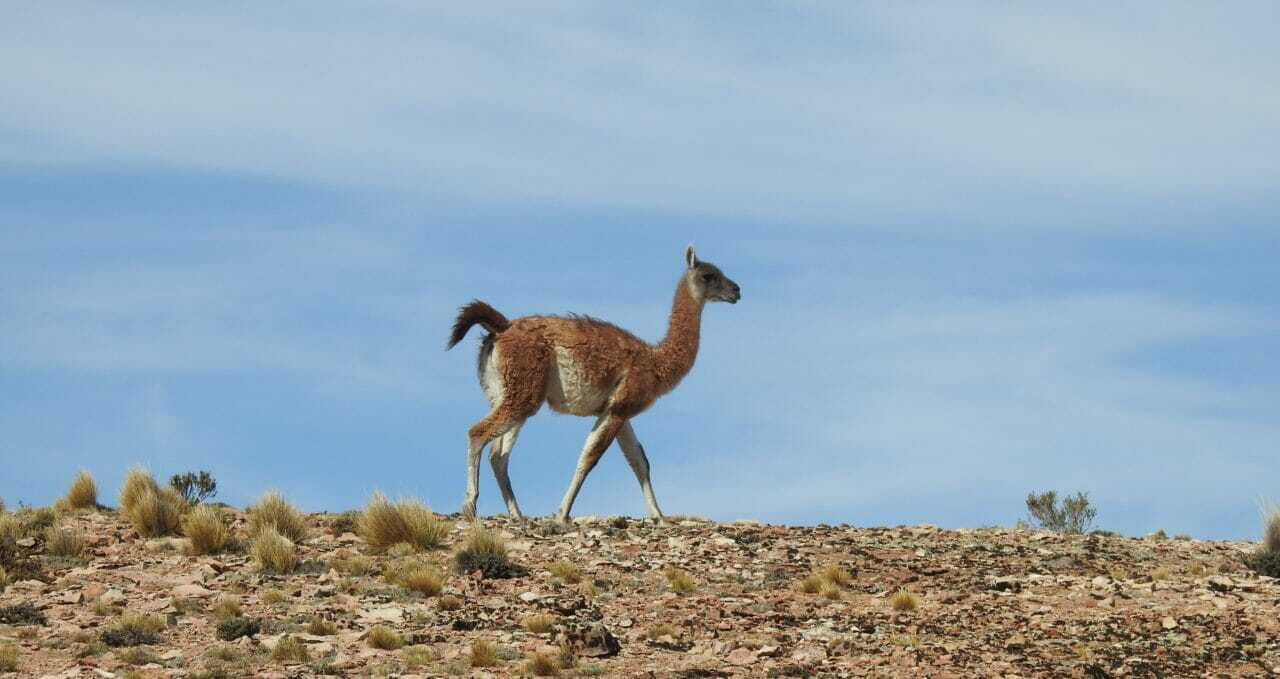
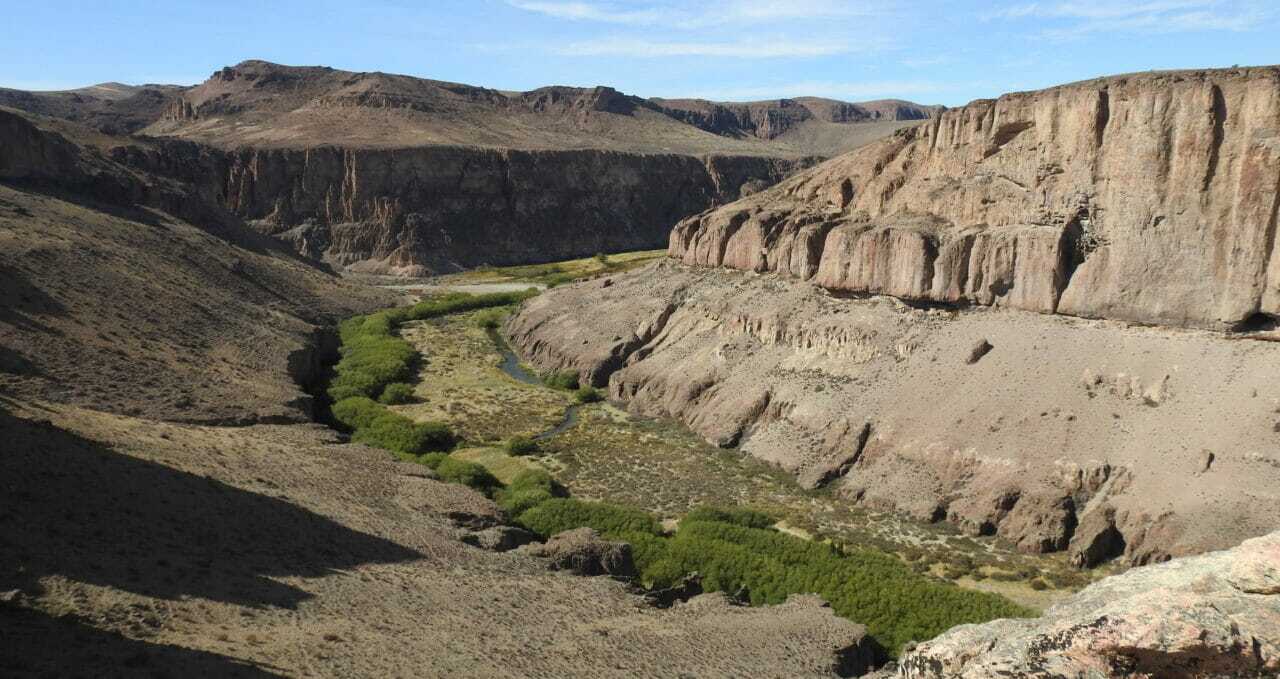
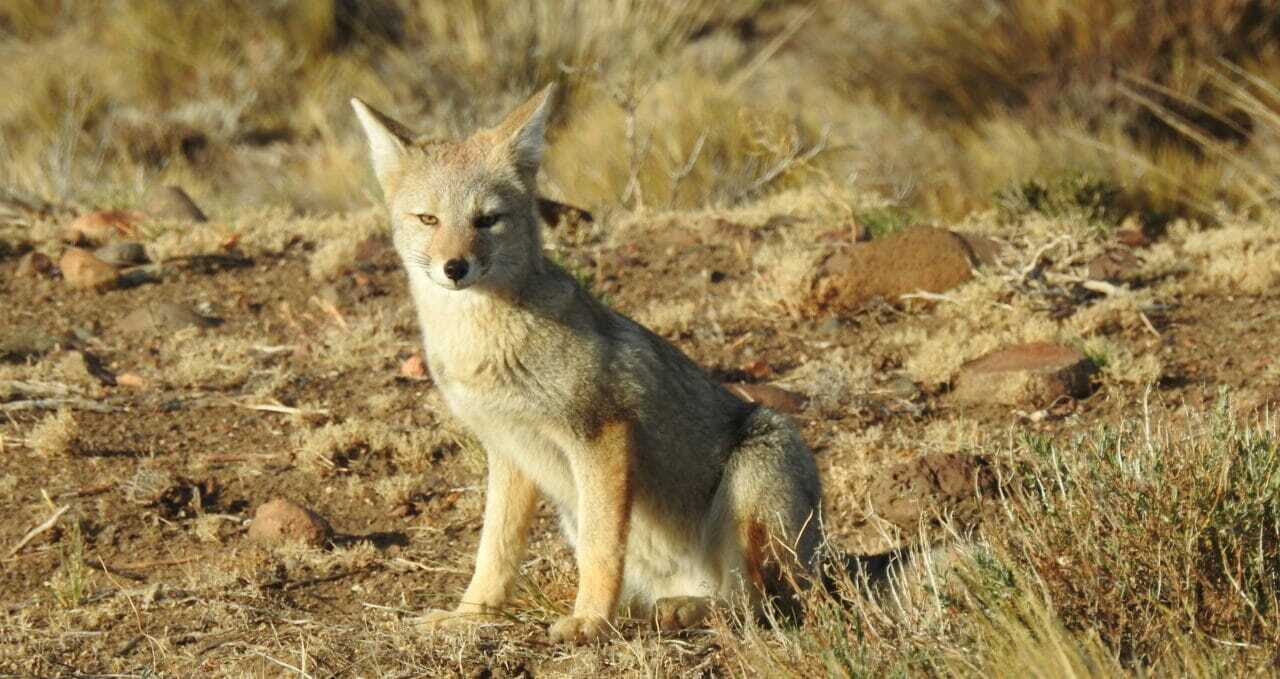

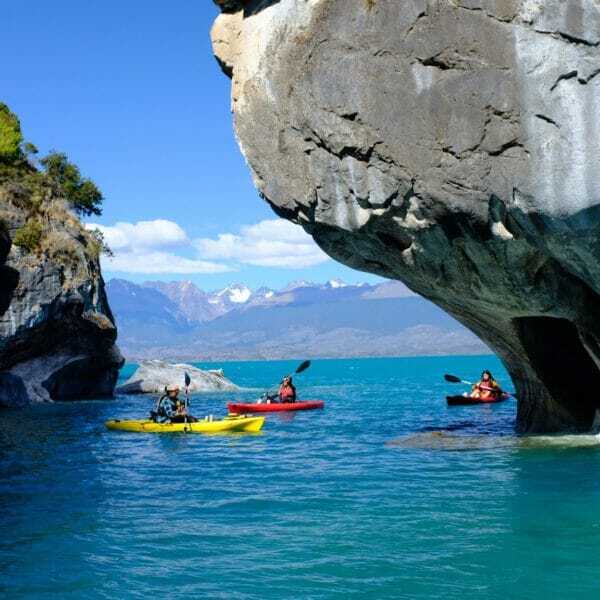
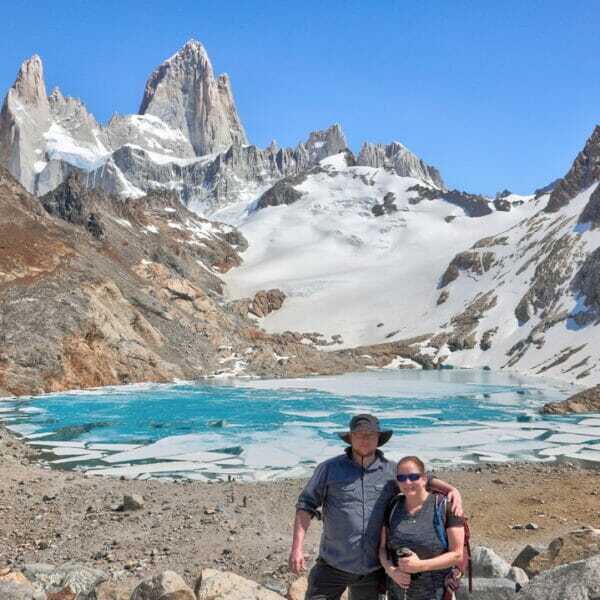
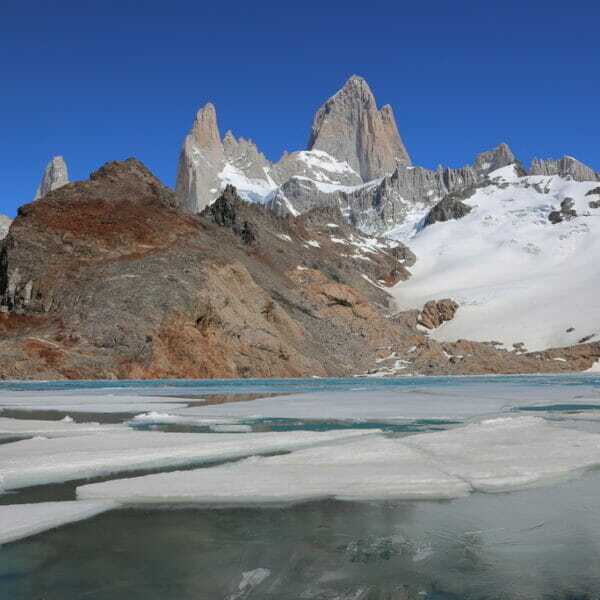
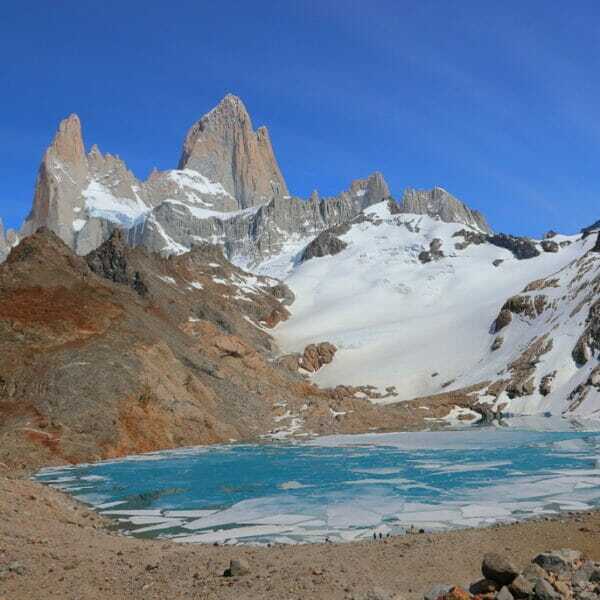
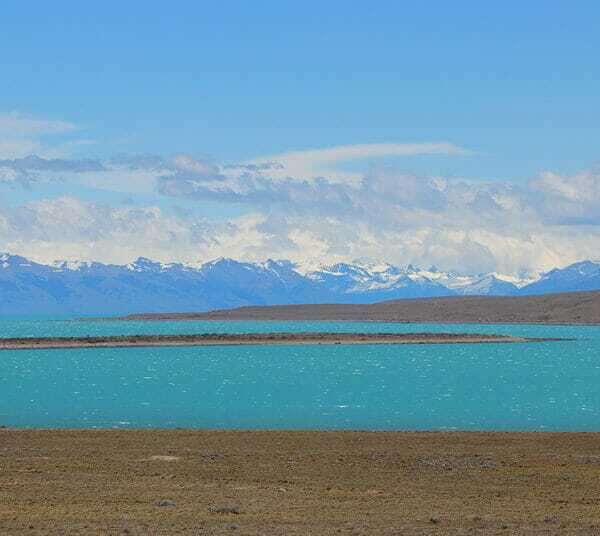
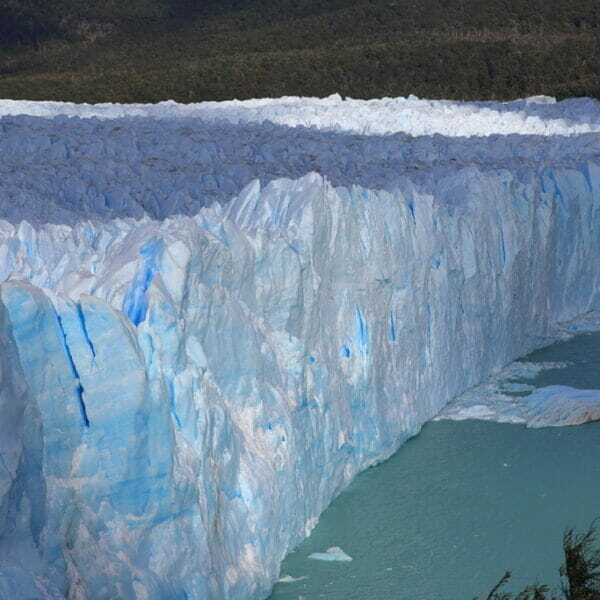
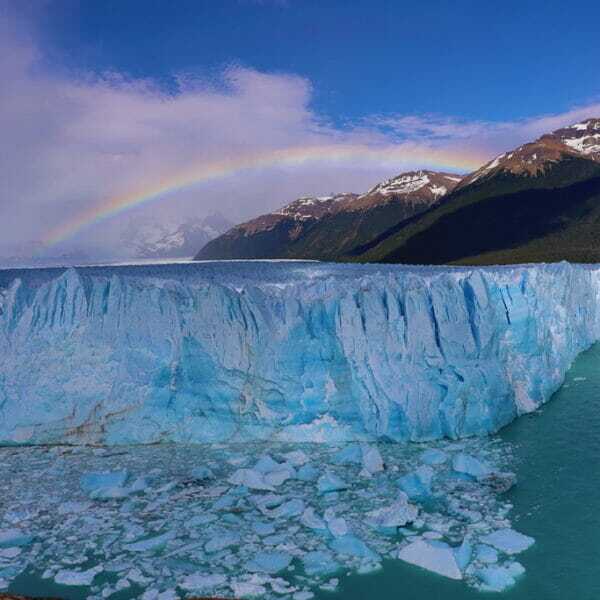
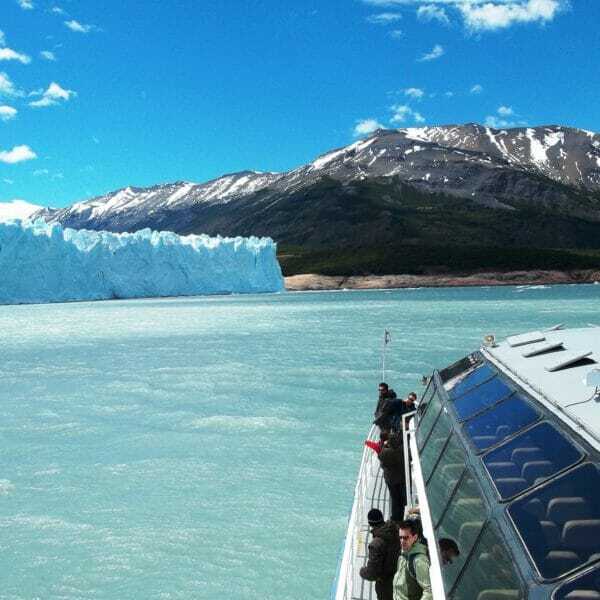
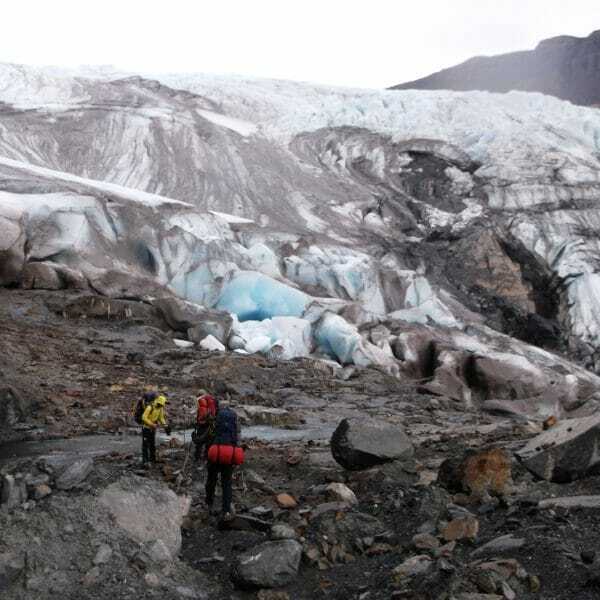
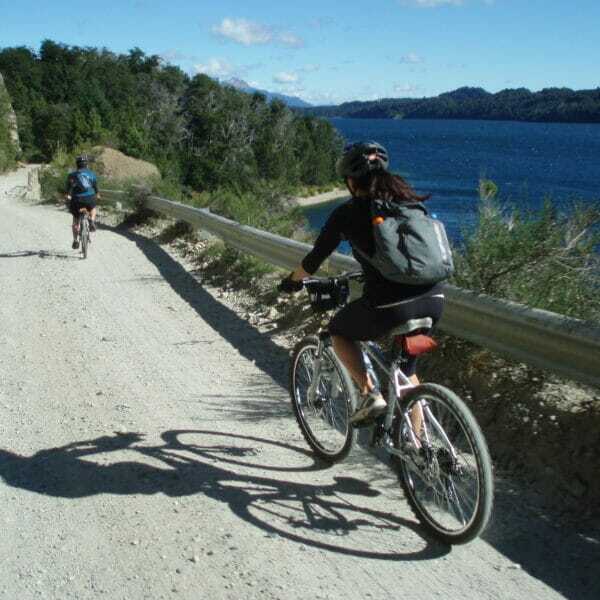
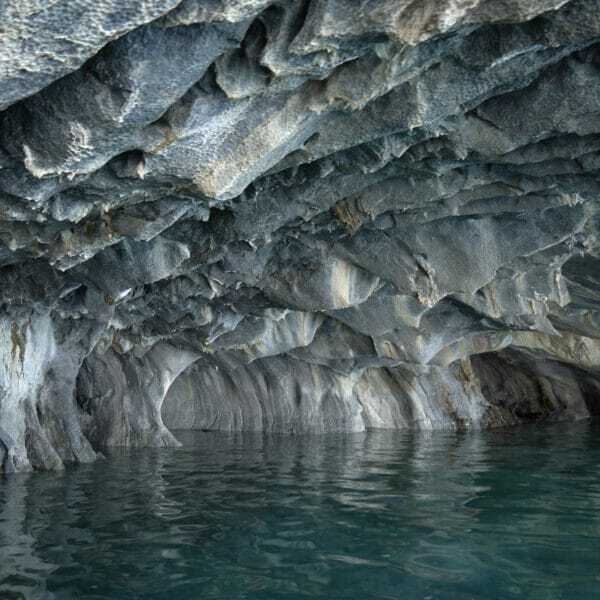
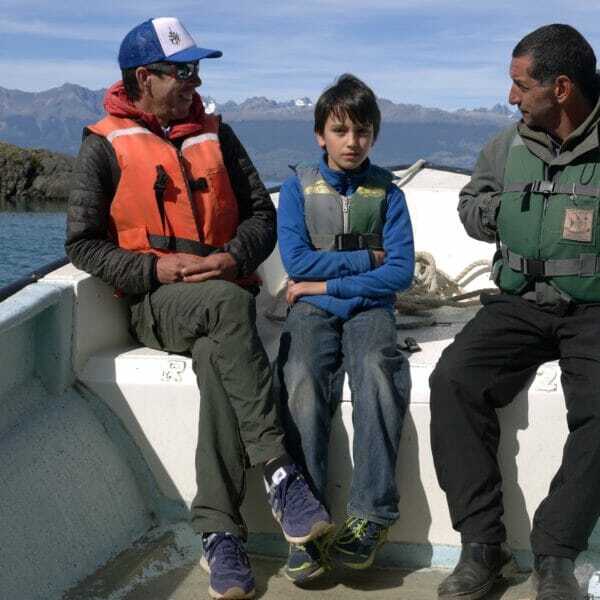

 a Tailor Made Tour
a Tailor Made Tour 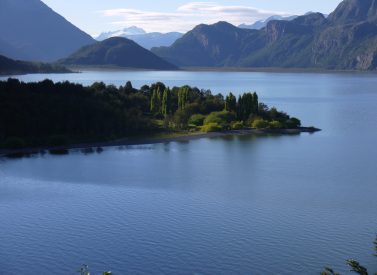

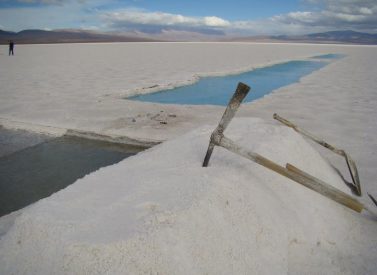

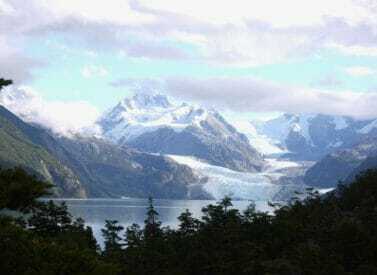

 a Group Tour
a Group Tour 